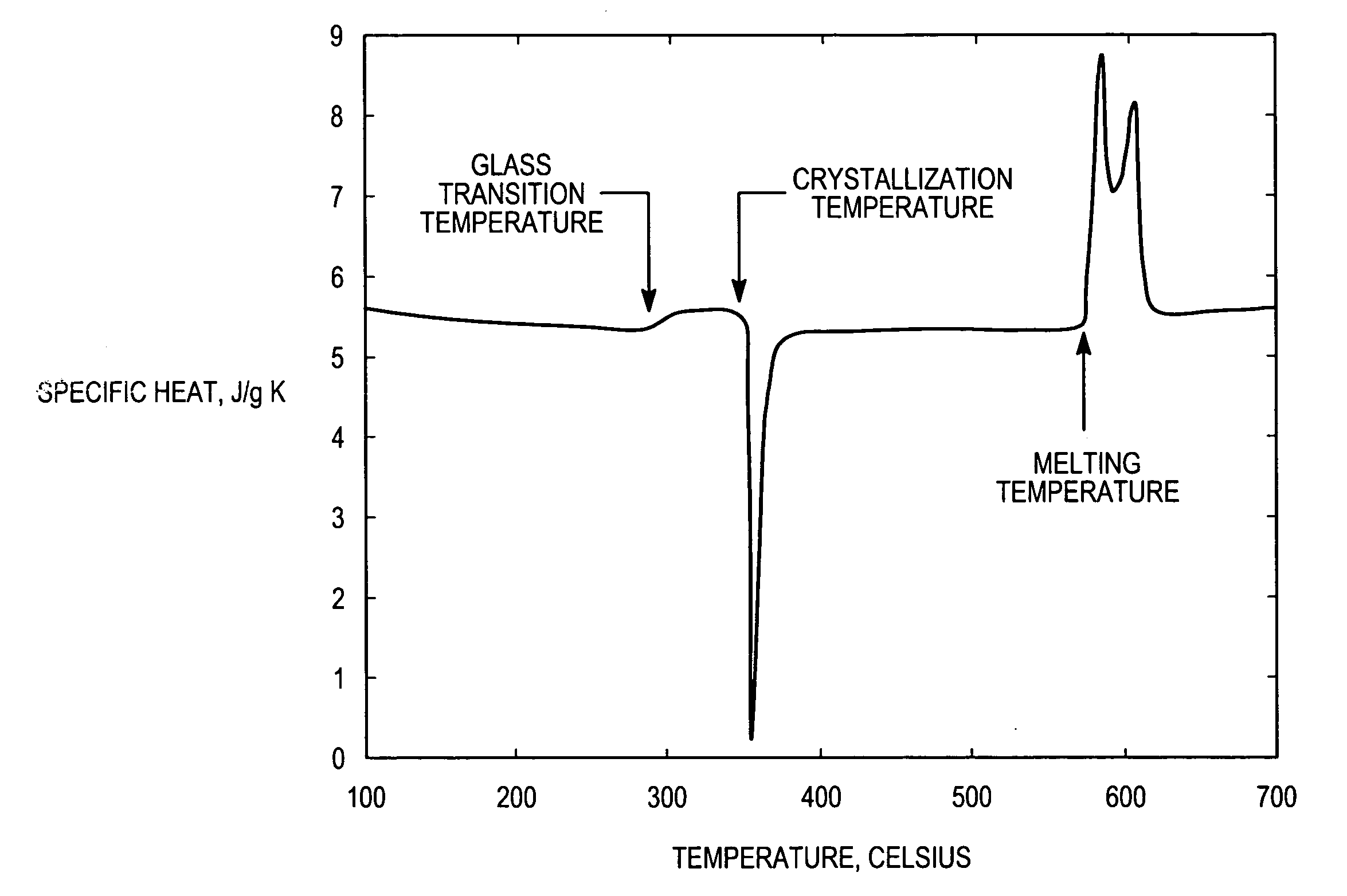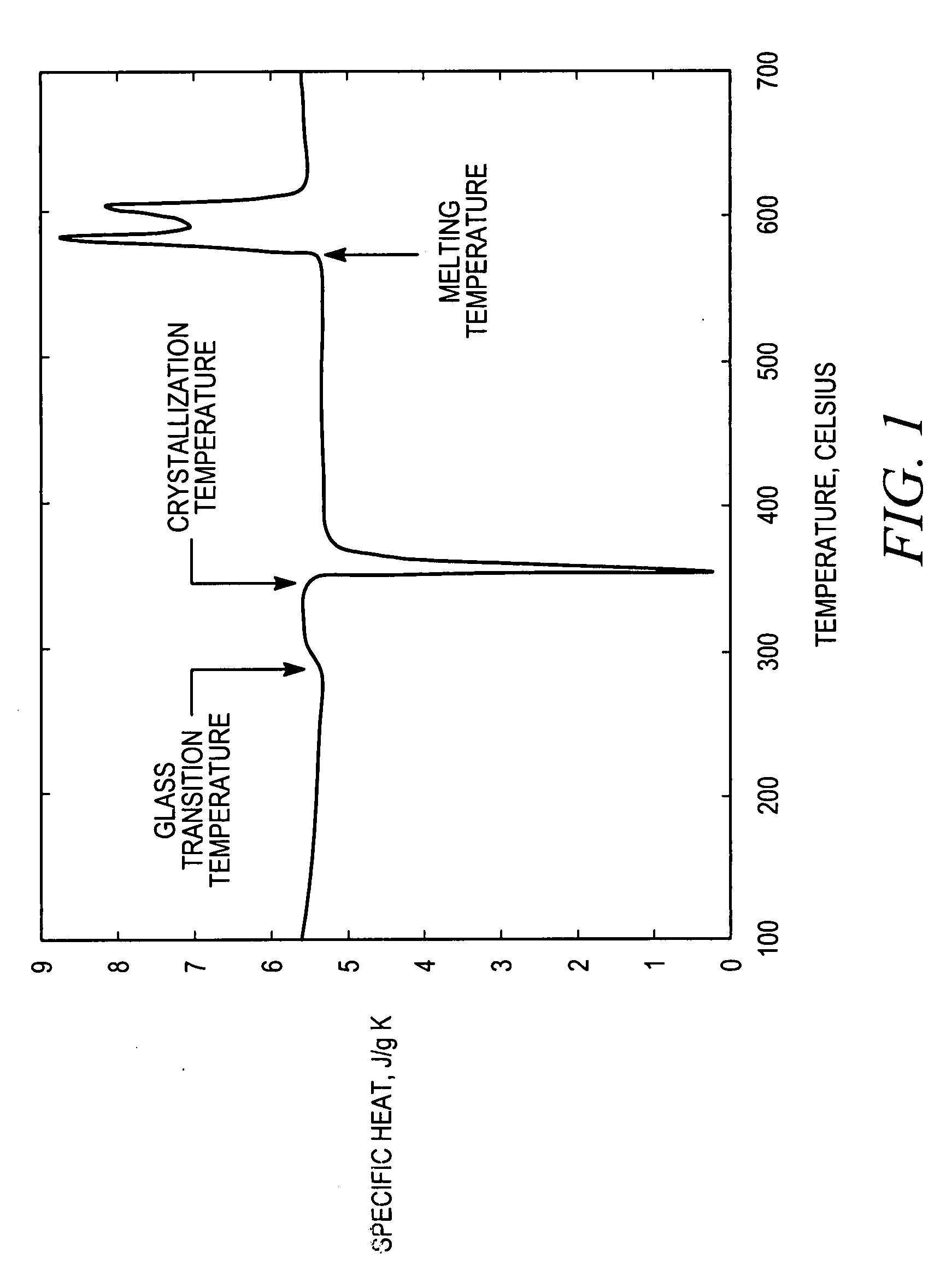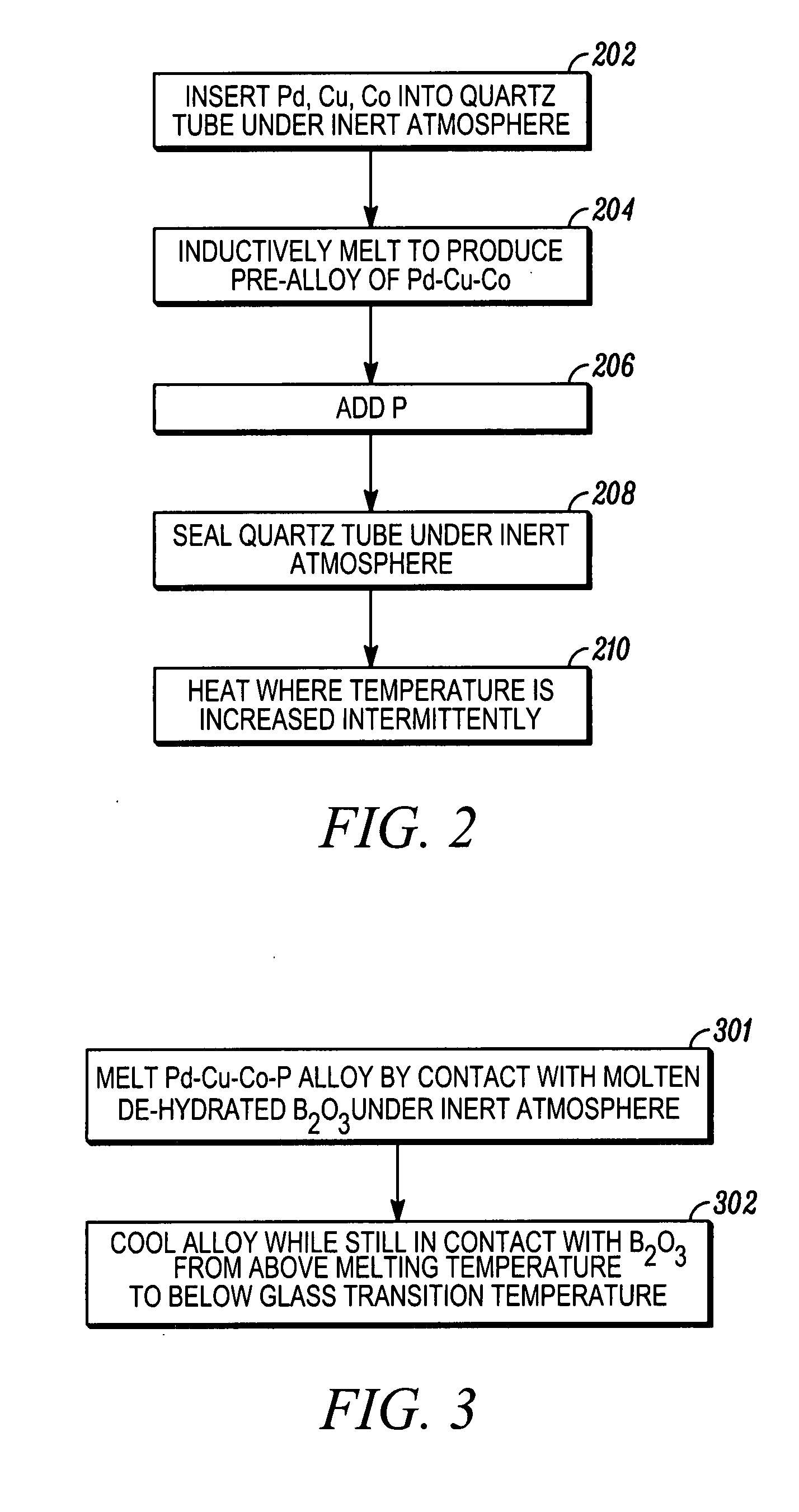Metallic glass alloys of palladium, copper, cobalt, and phosphorus
a technology of metal glass and alloys, applied in the field of metal glass alloys, can solve the problems of ni being toxic for biomedical use, affecting the utilization rate of ni in biomedical implants, and producing relatively small-sized products,
- Summary
- Abstract
- Description
- Claims
- Application Information
AI Technical Summary
Problems solved by technology
Method used
Image
Examples
Embodiment Construction
[0010]In the description that follows, the scope of the term “some embodiments” is not to be so limited as to mean more than one embodiment, but rather, the scope may include one embodiment, more than one embodiment, or perhaps all embodiments.
[0011]Embodiments of the present invention are based on the quaternary Pd—Cu—Co—P system, and the extensions of this quaternary system to higher order alloys by the addition of one or more alloying elements. Unlike Ni, Co is regarded as bio-compatible for biomedical use. Co and Ni have similar thermodynamic reactions with Pd. This suggests that Co may be an effective substitute for Ni in the Pd—Cu—Ni—P system in relation to its glass-forming ability. Furthermore, Co is a relatively inexpensive element, and it use may help to bring down the cost of embodiment alloys.
[0012]For some embodiments, one or more of the following atomic percentages may be used: the Pd content may be from about 20 to about 70 atomic percentage, the Cu content may be fro...
PUM
| Property | Measurement | Unit |
|---|---|---|
| Temperature | aaaaa | aaaaa |
| Temperature | aaaaa | aaaaa |
| Temperature | aaaaa | aaaaa |
Abstract
Description
Claims
Application Information
 Login to View More
Login to View More - R&D
- Intellectual Property
- Life Sciences
- Materials
- Tech Scout
- Unparalleled Data Quality
- Higher Quality Content
- 60% Fewer Hallucinations
Browse by: Latest US Patents, China's latest patents, Technical Efficacy Thesaurus, Application Domain, Technology Topic, Popular Technical Reports.
© 2025 PatSnap. All rights reserved.Legal|Privacy policy|Modern Slavery Act Transparency Statement|Sitemap|About US| Contact US: help@patsnap.com



